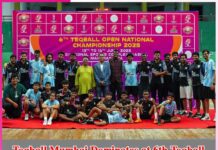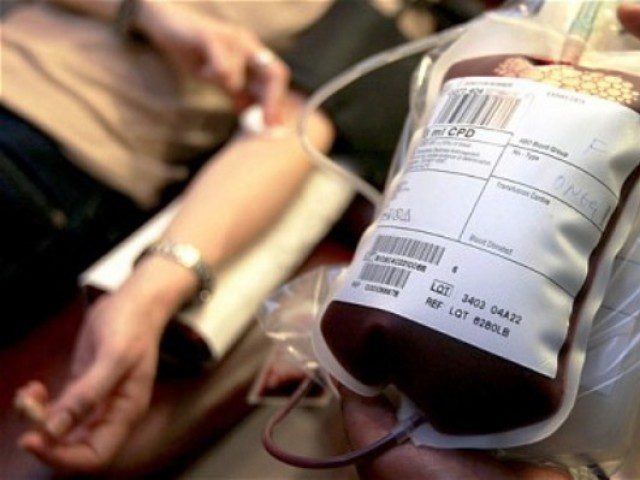Thalassemia is a hereditary blood disorder (congenital disease) transmitted from parents to their young ones.
This non-communicable disease does not spread through personal contact, mosquito bite, and food or water contamination.
It is a terrifying disorder because of many pre-natal deaths. About 10000-15000 children are born with Thalassemia every year in India. This disease is more prevalent in people of north-east Asia, south Asia and Mediterranean countries.
About 60 to 80 million people act as carriers for thalassemia genes. Centre’s for care of Thalassemia were started in mid 1970s in Mumbai and Delhi and then in other cities.
World Thalassemia Day is celebrated on 8th May every year, to create awareness about the causes, effects, prevention and treatment of this disease.
Table of Contents
Effects of Thalassemia
- Shortage of red blood cells due to their low production.
- Anaemia due to shortage of rbc and hemoglobin. Hemoglobin of red blood cells (rbc) is oxygen carrying component. Body organs fail to receive sufficient oxygen if the rbc becomes less or defective.
- Breathing problems, Fatigue and weakness.
- Deposition of excess of iron due to disease or blood transfusion which results in this order in liver, heart, Kidneys etc.
- Enlarged spleen.
- Bone deformation due to marrow expansion and the bones become weak.
- Many red blood cells become, short sized and pale due to low synthesis of globin (Hemoglobino-pathy).
- Requires lifelong blood transfusion.
Diagnosis of Thalassemia
- Test for Anemia, complete blood composition and Hemoglobin level.
- Hemoglobin electrophoresis (separate and measure the molecules of Hemoglobin).
- Test for pre-natal babies-In between 8-11 weeks of pregnancy. It involves taking samples of Amniotic fluid or tissue from Placenta.
- DNA analysis/Gene technology-High ranking facilities are also available in India.
Molecular Pathology
Hemoglobin of red blood cells has two components, one inorganic heme (Fe) in the centre which is enveloped by four organic molecules of globin proteins. The globin portion is globular which consists of two alpha chains and two beta chains. The synthesis of alpha chain is regulated by 4-genes present on 16th chromosome.
The production of beta chains is controlled by two genes present on 11th chromosome. Each parent contributes two alpha genes and one beta gene. Any defect in one or more genes (due to deletion or mutation) results in Thalassemia.
Thus Thalessemia is autosomal recessive congenital disease which gets transmitted through inheritance of defective genes from parents to young ones. Depending upon the quality and quantity of affected genes it causes alpha or beta Thalessemia.
Alpha Thalassemia
If one or more alpha globin genes are missing, the extent of disease goes on increasing. If the child receives three genes out of four, he or she only stays as silent carrier and will not develop any sign of illness. If one has two missing genes, the issue develops Alpha Thalassemia minor with mild anemia.
It may not need any treatment, if 3-alpha globin genes are missing, one will have mild to moderately severe anemia called Hemoglobin H-disease. Such patients require regular blood transfusion depending upon the status of anemia. If all the 4-alpha genes become missing, the fetus will be still born or the child dies shortly after birth because the body produces Bart Hemoglobin.
Beta Thalassemia
There are two genes to generate beta chain of hemoglobin in normal human beings (one contributed by each parent). Beta Thalassemia can occur due to mutation (alteration) in the nature of genes. If only one modified gene is inherited, the child suffers from mild Beta Thalassemia. But with two altered genes, Beta Thalassemia or Cooley’s anemia results wherein the baby is generally healthy at birth but develops symptoms within two years. Hemoglobin -H disease occurs due to combination of two types of defective and heritable genes, one for Beta Thalassemia and the other for Sickle cell anemia (moderate to severe anemia).
Treatment of Thalassemia
It depends upon the type and severity of disorder:
Blood transfusion therapy
Supply of healthy and appropriate units of blood or the units of packed red blood cell.
Home treatment
Provide Iron rich multivitamins and Vitamin-c. These vitamins help to increase the absorption iron from food intake. Folic Acid supplement helps to build healthy red blood cells.
Iron chelation Therapy
Regular blood transfusion leads to iron overload which may damage Liver, spleen, and kidneys. Recent researches have brought in two major medicines.
Deferoxamine
A fluid medicine given slowly under the skin with the help of small portable pump overnight. It takes sufficient time and is slightly painful. It may also cause defects in vision and hearing capabilities.
Deferasirox
One tablet is provided each day. Side effects may include nausea and joint pain.
Splenectomey
Spleen of the patient can be removed through surgery when it starts to damage more red blood cells and transfusion of blood becomes less active.
Bone Marrow Transplant (BMT)
This is the main treatment of moderate and severe Thalassemia. Major operation involves the replacement of abnormal and faulty stem cells with healthy cells from a donor. But very few patients are able to get an appropriate donor. Very few hospitals are able to provide these facilities as this requires sophisticated instruments and expert Surgeons.
Use of Hydroxyurea
To induce fetal hemoglobin are reduce in effective red blood cells production.
Preventive Measures
Involve pre-marital testing, pre-natal diagnosis and prospective screening.
Remedial Project of Dera Sacha Sauda
His holiness saint Gurmeet Ram Rahim Singh Ji Insan has launched 111 – projects for the welfare of human community (with special focus towards thalassemia).
a).Revered Bapu Magghar Singh Ji international Blood bank has been established which is capable of providing safest blood and packed blood cell transfusion facilities-all free of cost.
b).Thousands of volunteers opt for blood donation in camps organized regularly to provide help for Indian armed forces, Media personnel, Thalassemia patients etc.
It is estimated that 2 million units of packed red blood cells are required in India for Thalassemia Patients each year.
c). A 300 bedded Shah Satnam Ji Super specialty hospital has been established at Sirsa which also has facilities for the diagnosis and treatment of Thalessemia patients.
e).Most adorable Guruji has been kind enough to donate Rs.40 Lakh through the income from ‘MSG, The Messenger for the research project to eliminate this dreaded disease.
A most significant step has been taken by the Govt. of India for the care and management of Thalassemia in 12th five year plan. Thalassemia International federation has played a significant role by deputing and supporting experts to conduct workshops in India.
– Dr. Triloki Nath Chugh Insan, Co-ordinator, Shah Satnam Ji Educational Institutions, DSS, Sirsa (Haryana)













































